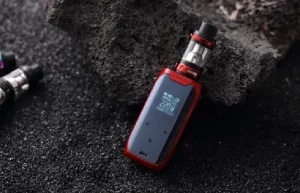It’s important to be aware that putting a vape or e-cigarette in checked luggage can result in consequences. While vaping products are legal to possess in many areas, strict regulations exist around transporting devices in airplane cargo holds. If TSA agents discover a vape during bag screening, it could be confiscated due to the possibility of the battery catching fire.
The agency considers e-cigarette batteries to be hazardous materials, so they must be transported in carry-on luggage only after ensuring they are discharged. Leaving one in checked baggage runs the risk of it accidentally turning on during transit. This could cause smoke or sparks that sets off bag scanners. The traveler may face questioning, delays getting their luggage back, or even fines. To avoid any issues, it’s best to follow regulations and keep all vaping gear and emptied battery cartridges accessible in carry-on bags.
Table of Contents
What Consequences We Will Face To Put The Vape In Checked Luggage?

If a vaping device is discovered in checked luggage, the traveler could face several consequences. First, the vape will likely be confiscated by TSA officers during bag screening. As the batteries are considered hazardous materials, they pose a potential fire risk if accidentally activated in the cargo hold. The traveler may then have to collect their luggage without the vape device.
There is also a possibility of delaying the luggage delivery if the bag needs further inspection after the discovery. More seriously, leaving vapes in checked bags violates TSA regulations and could result in fines up to $13,333 per violation. International travelers may face higher penalties depending on the country. Putting airline staff and passengers at risk by not following battery transport rules is not recommended. It’s best to avoid these consequences and potential legal troubles by always keeping e-cigs and other vaping gear within your carry-on oversight. Adhering to safety protocols eliminates uncertainty at airport security.
What Are The Specific Regulations Regarding Carrying Vapes In Carry-On Luggage?
- Batteries must be removed from the vaping device and transported in the carry-on bag, not in checked bags. This prevents accidental powering on during transit.
- Removed batteries must be protected from short circuit by insulative tape or being placed in their original packaging. Loose batteries can be confiscated.
- A limit of two vape batteries or no more than 100Wh total battery capacity is allowed in carry-ons. Larger battery banks must go in checked luggage.
- Vape devices and cartridges/tanks must be carried in carry-on luggage only, not checked bags, due to fire risk from accidental activation.
- Liquids must follow TSA rules – 100ml or less of vape juice in a 1 quart plastic bag, placed in carry-on. No liquids in checked bags.
- Devices and batteries should be easily accessible in carry-on for TSA screening to avoid delays.
How Can We Transport Vapes Safely On Flights?

There are important steps travelers can take to properly transport vaping devices and e-liquids when flying. The keys are separating components, containment, and stowing everything in carry-on luggage only. Batteries should be removed from devices and placed in the original packaging if possible, or securely taped to prevent accidental activation. These, along with any spare batteries, can be carried but must not exceed airline watt-hour limits or TSA regulations.
Vapes and e-liquids then go into carry-ons as well. Liquids should be stored in 1 quart plastic bags that are then placed inside the main carry-on bag compartment amid other belongings. Taking these precautions helps ensure loose components don’t incur damage during travel while keeping everything visible for TSA screening. Placing vaping gear directly into checked baggage risks smoking alarms and confiscation. By carefully following packaging and transportation protocols, vapers can feel at ease knowing their gear will arrive safely stowed above board.
Can We Vape On Airplanes?
Vaping on commercial airplanes is strictly prohibited by all major airlines and aviation authorities. The Federal Aviation Administration (FAA) bans the use of electronic cigarettes, or e-cigarettes, on flights due to safety concerns. When vaping, an aerosol mist is emitted that contains ultra-fine particles. In an enclosed cabin environment with little air flow, this could present inhalation risks to others or potentially contribute to the buildup of hazardous fumes.
Additionally, the lithium-ion batteries in vaping devices pose fire risks if damaged or improperly handled at high altitudes. As a result, all major U.S. carriers and many international airlines enforce no-vaping policies. Passengers who violate these rules can face fines by the TSA or FAA as well as getting banned from future flights with the airline. For the safety of everyone on board, it’s best to refrain from vaping during air travel and wait until reaching your destination.
Conclusion
While vaping is prohibited in the passenger cabin, most major airlines will allow electronic cigarettes or vaping devices to be transported in checked luggage as long as they are properly packaged and their batteries meet carriage requirements. This allows travelers to bring their personal vaping gear with them, but helps ensure the safety of the cargo hold environment.
However, international rules may vary and not all airlines have published policies, so it’s best to check restrictions with your specific carrier ahead of time. As with any batteries transported by air, vaping batteries should be protected against short circuits and damage, and kept within their original retail packaging if possible. Following these guidelines minimizes hazards while respecting passengers’ needs. Allowing checked vaping gear provides a reasonable compromise that balances airline rules with travelers’ preferences when flown as cargo according to regulations.
Related posts
Featured Posts
Garage – Creative Ideas To Convert Into Something Different
Garage – Parking your car or motorcycle – and you’ve turned it into an improvised warehouse, you’re wasting precious space…
Psychiatrist – Main Functions, Types And Importance
Psychiatrist – The human brain is a very multifaceted organ that allows us to perform various bodily functions. These functions…




